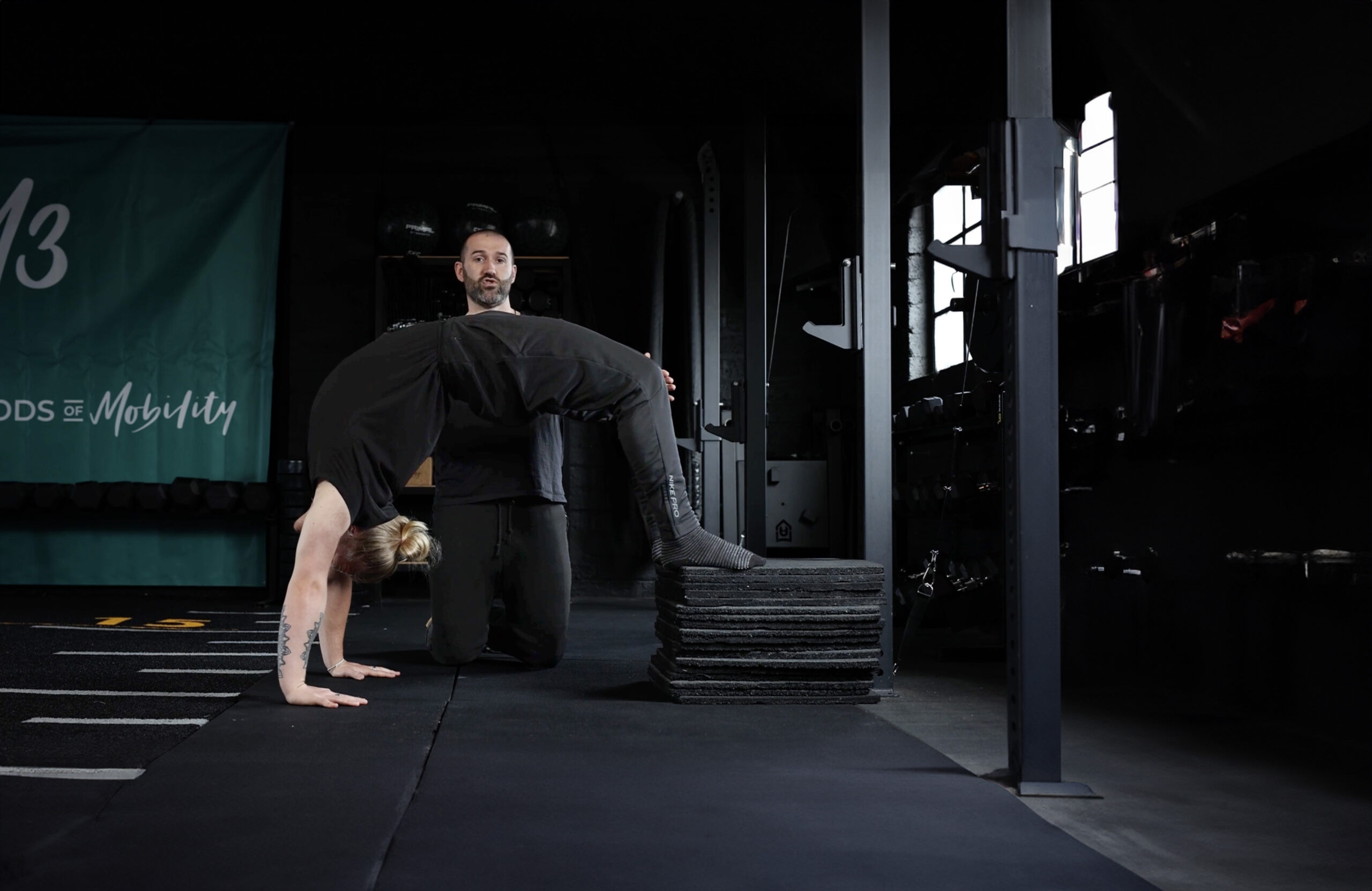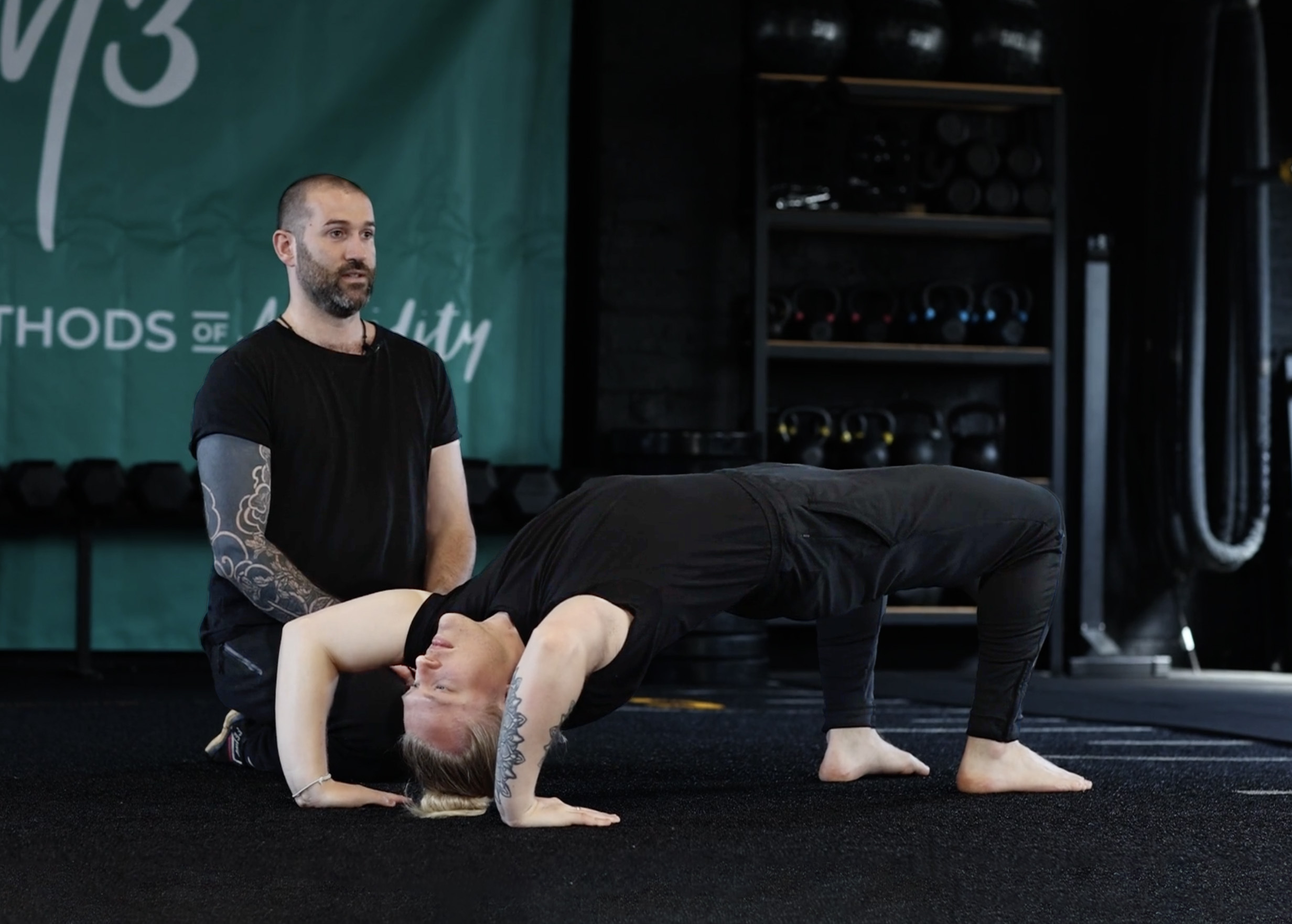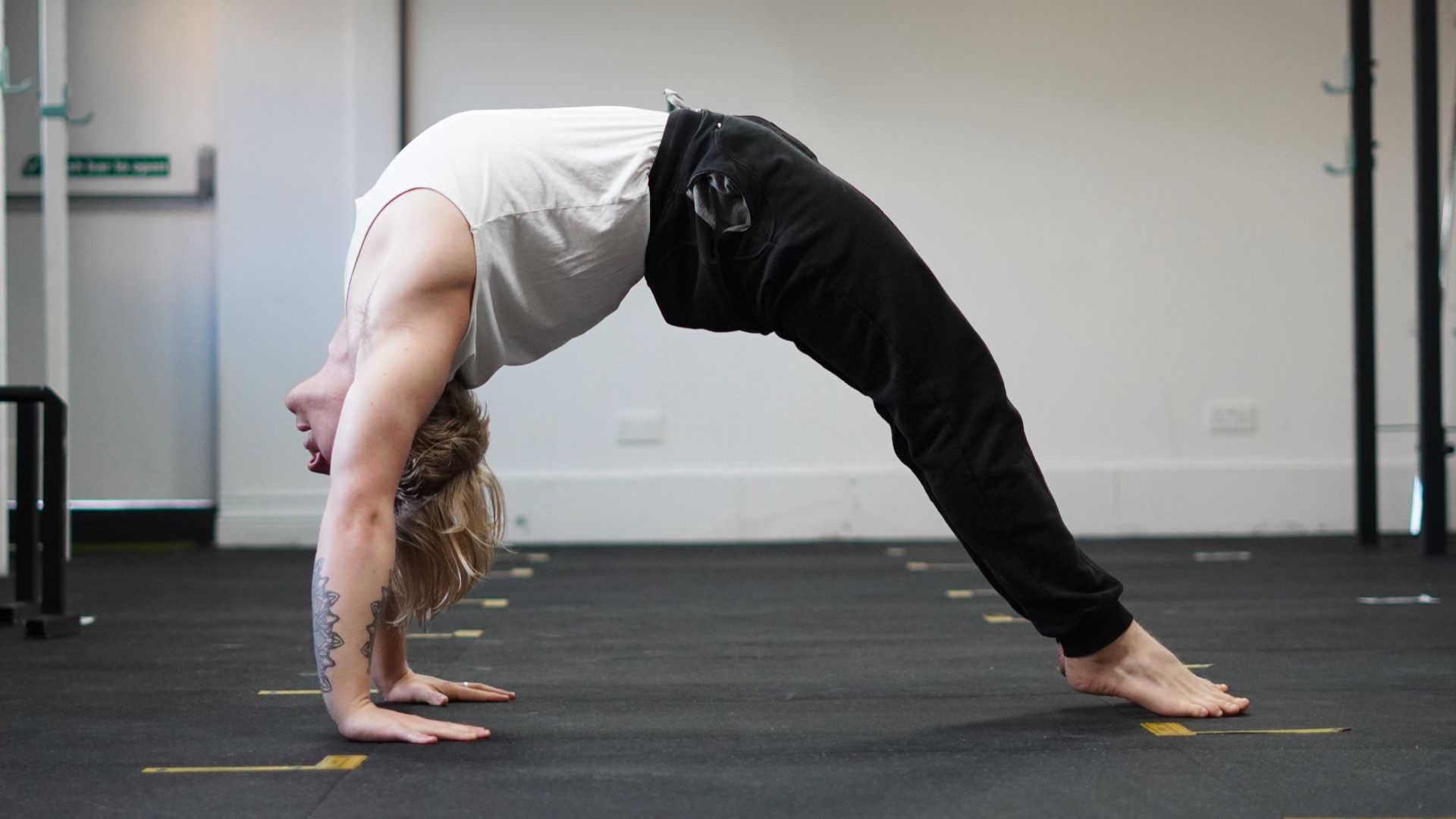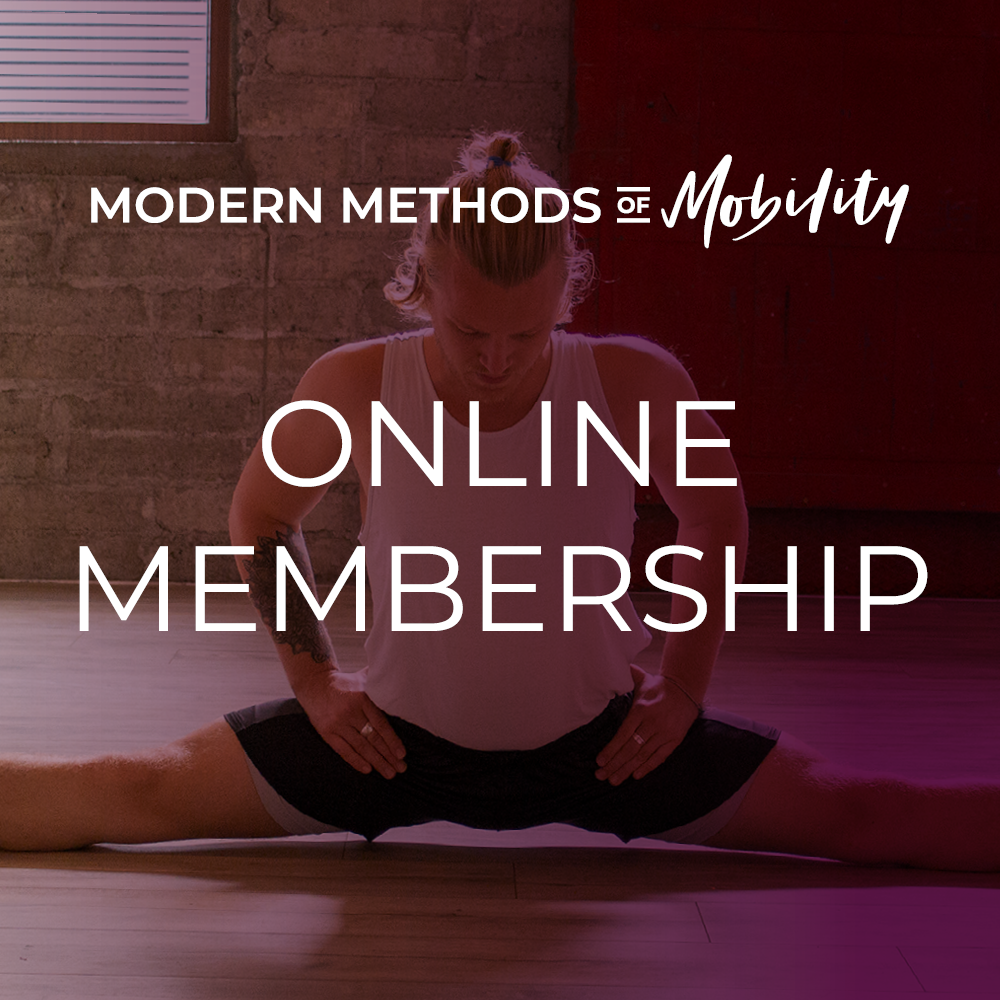The back-bridge, Urdhva Dhanurasana, or “wheel”, is a position which is either considered a staple of many movement practices or held in high esteem by them. With yoga, contortion, acrobatics, dance, gymnastics and grappling martial arts being just a few. It’s an incredibly useful and demanding position that displays great flexibility in the anterior chain and sufficient strength in the posterior chain.
Training it can benefit a lot of people, especially those who spend a lot of their time sitting down, hunched over in a pseudo-foetal position. The bridge acts as an effective way of lengthening the tissues that commonly get shortened by modern living.
It isn’t uncommon for people to train the bridge for years without any meaningful progress and then give up, with the belief that they’ll never be able do it. Sadly, this lack of development could be explained by the way the bridge is trained by most, instead of some inherent physical barrier. The initial mistake that a lot of people will typically make is training the bridge only by doing the bridge.
This approach is effective only once you reach a pre-requisite level of flexibility. Unless you display the level of flexibility demonstrated in the image below, you’re going to have to approach the bridge from another angle.
The approach we use in the M3 system is to split the bridge into its 3 main component parts:
- Shoulder Flexion
- Spinal extension
- Hip Extension
We develop these 3 areas individually to then be assembled later. We approach the bridge as a compound movement, an expression of range already available.
How this approach would practically look will vary from person to person, we’re all special snowflakes with different needs and responses to training, but the main takeaway I want from this is that if you’re someone who has given up on the bridge, don’t despair! Instead look at your capacity to express range in the 3 main areas of your body and see if any of them lag significantly behind the others, if so, that’s great! You have something to work on that may open up the path to a solid back bridge for you.
Let’s say that you’ve been training the areas that were mentioned already, or that you naturally have good range available to you and you’re able to express the pre-requisite range to begin working on the bridge as its own movement (Hurray!). What’s the best way to go about it?
If you’re feeling confident you can just keep trying to hold the position progressively higher and longer, but it’s very common for people to come to this point and still find the position very hard to hold.
Very often trainees will fatigue quickly or are overwhelmed by the range of sensations they feel in the bridge. There are two things we do in the M3 system to make this more manageable and digestible:

1. Feet Elevated Bridge
By elevating the feet we reduce the hip extension demands in the bridge, which means the focus can shift towards the shoulders and upper back. This allows for the chest to move over the hands more, by extending in the upper back while also feeling what elevated and flexed shoulders feel like in this position. It’s incredibly useful for cementing the sensational awareness of the bridge, as well as integrating body mechanics that have been practiced previously.

2. Bridge Push-ups
Bridge Push-ups are incredibly useful tool for titrating up one’s tolerance of the bridge position. By coming in and out of the top position you are able to slowly increase the capacity to handle the end range, as well as push yourself harder in that range than you would normally be able to if you were just holding it.
Both the Feet elevated bridge and the bridge push-ups can be combined into one exercise which really potentiates the effects of both, though like all exercises there are technical demands that need to be overcome.
This approach should be combined with the correct supplementary work for body-parts that are lagging behind in flexibility, it’s very rare to see an even expression of range in the bridge, so it’s periodically worth picking apart the 3 main areas and analysing if any one needs more attention than the others.
This basic roadmap is the simplest path to the bridge, but with any journey there are often bumps in the road, or diversions. To ensure the most effective progress in the bridge we have our Bridge Program. It is the most complete flexibility program for the goal of attaining the bridge, covering many more specific nuances and needs that will arise on the road towards the bridge, making sure that progress is as smooth and efficient as possible.
Good luck!



